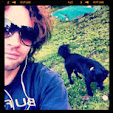 My wife and I went into Toys R Us over the weekend to buy some presents for an adopt-a-family program, and of course, also walked out with a present for ourselves -- a new Wii! We promptly returned home and spent the rest of the weekend playing it, basically stopping only to eat. We had a blast, and at least for the foreseeable future, I see us spending our nights together not watching Netflix, but playing the Wii.
My wife and I went into Toys R Us over the weekend to buy some presents for an adopt-a-family program, and of course, also walked out with a present for ourselves -- a new Wii! We promptly returned home and spent the rest of the weekend playing it, basically stopping only to eat. We had a blast, and at least for the foreseeable future, I see us spending our nights together not watching Netflix, but playing the Wii.Among the current crop of game consoles, the Wii stands alone. Its small and nondescript presence under our TV belies the amount of fun to be had upon turning it on. Not only are Wii Sports, Wii Play, Super Mario Galaxy and New Super Mario Bros. Wii totally unique and ridiculously fun games unavailable for any other system, but the Wii Virtual Console contains a stunning amount of old-school games from a variety of classic game consoles like the NES, Super NES, Turbo Grafx-16, Sega Genesis and Commodore 64. And that's not all. Nintendo somehow managed to squeeze four GameCube controller ports and two memory-card slots into the side of the Wii, so now I can play all the great GameCube titles I missed out on. Funny how Nintendo could do such a thing for the Wii, while I still can't play PlayStation and PlayStation2 games on my PlayStation3, which is about three-times the size of the Wii. Good job, Sony.
Granted, I wasn't impressed with the selection of Wii games currently on store shelves. Much of Wii's game library seems like kiddie stuff to me, and right now the only other game I really want to buy is The Legend of Zelda: Twilight Princess, which came out about three years ago (and I'll probably end up opting for the GameCube version if I can find it). So I guess I understand why hardcore gamers have been dismissive of the Wii, but I also understand why so many people have embraced it. As long as it's taken me to get on the Wii bandwagon, there's one thing I can't deny: Nintendo has made video games fun again.















